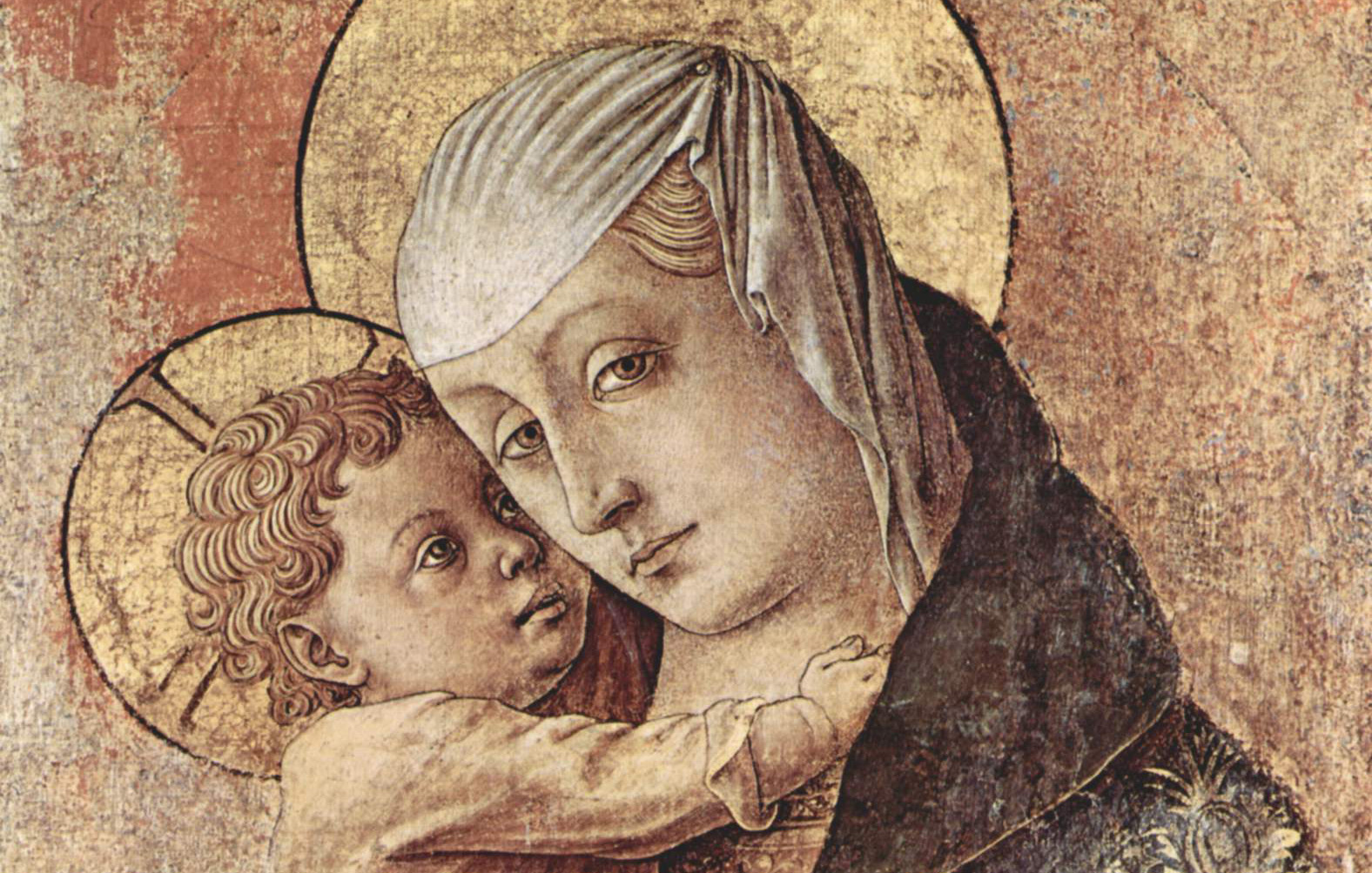
- By: Staff Tibiceco / Senza categoria / 0 Comments
Crivelli around the Marche region
Of Venetian origin, Carlo Crivelli moves away from the lagoon city, where he was born around 1430, as a young man, to never return. The painter left his first work signed and dated in Marche in 1468 at Massa Fermana, where he landed perhaps coming from Zadar in Dalmatia.
Commissioned in the Marche, between Camerino, Fabriano, Ascoli Piceno the works of Carlo Crivelli are largely preserved in the most important museums in the world. His superb polyptychs, placed in churches and districts often unreachable in the past centuries, are ignored by the mannerist Vasari, who makes no mention of them at all in the editions of his Lives. Sometimes replaced in the ‘600 and ‘700 by altarpieces, the works of Carlo Crivelli began to disperse before the Anglo-Saxon taste for the art of the primitives of the ‘400 revaluated them and appropriated.
After the Napoleonic spoliations, which helped to bring to Brera numerous works of Crivelli from the Marches, the English concluded the process of dispersion of his works on board. Just think that until recently an entire room of the National Gallery in London was dedicated only to paintings by Carlo Crivelli. Despite all this, there are still several works of Crivelli that can be admired in the Marche.
MONTEFIORE DELL’ASO
Museum Pole of S. Francesco – Triptych of Montefiore
The triptych of Montefiore dell’Aso of the Church of Santa Lucia dates back to 1473. It is welcomed by a particularly disturbing Magdalene, richly dressed in a cotta embroidered with gold and wrapped in a cloak, restrained by long and tapered fingers; to the mundane look of the saint on the right, stands the serene majesty of Catherine of Alexandria, Immobile in the armour-robe, tending to support the huge spiked wheel of martyrdom. A look of his, which is lost in a veil of melancholy, in a silent and absorbed timeless smile.
ASCOLI PICENO
Civic Art Gallery – two Trittics of Valle Castellana
Diocesan Museum – Madonna di Poggio di Bretta
Cathedral – Polyptych
In the town where Carlo Crivelli is documented in 1487 and perhaps present since 1496, his masterpieces are preserved within a few meters: the great Polyptych of the Cathedral of 1473, divided into ten panels; the two Trittics of Valle Castellana, of the Municipal Art Gallery, dated between 1470 and 1473; the Madonna di Poggio di Bretta of the Diocesan Museum, executed before the Polyptych of the Cathedral.
The superb and unaltered Ascoli Polyptych of 1473, returned to its former glory after the restoration it was submitted in the 70s, is a work of exceptional importance both for the intrinsic value of the painting, preserved in its original location, Because it is one of the rare polyptychs to have remained almost intact in the painted parts and in the frame. Here the poetic narrative vein of Crivelli reaches one of his peaks: in the gentle expression of the face. of the Virgin, a goddess wrapped in a precious and thin white veil set against the background of the red fire drape and the strong pathos spread in the central compartment of the upper register depicting the Mourning on Christ dead.
MONTE SAN MARTINO
Church of San Martino – Polyptych of Monte San Martino
After the recent restoration, you can admire the polyptych fruit of the work of brothers Carlo and Vittore. Carlo probably had the execution of the higher order (except the Christ of the Cimaza), where stands out the arrogant and aristocratic Saint Catherine of Alexandria, closed in the splendid golden robe; to Vittore the Madonna with the Child, the two saints on the right and the execution of the predella, designed by his brother Carlo.
MASSA FERMANA
Church of SS. Lorenzo, Silvestro and Ruffino – Polyptych
The superb polyptych by Massa Fermana, of Franciscan inspiration, is dated 1468 and was probably commissioned by the Counts Azzolino di Fermo. It depicts the Madonna with the Child in the center; on the sides four saints; in the cusp in the center the Christ in piety, on the sides the Annunciation; in the predella the Oration in the garden, the Crucifixion, the Flagellation and the Resurrection. In the perspective structure on which the predella is set and in the expression of the faces of the saints, the Polyptych reveals the artist’s debt towards the modules of the Squarcione and the Padovana lesson by Donatello.
CORRIDONIA
Parish art gallery of the church of SS. Pietro, Paolo and Donato – Madonna breastfeeding the Child
The Madonna who breastfeeds the Child of Corridonia, surviving fragment of a larger complex commissioned to Crivelli by the Augustinians of Montolmo, stylistically prelude to the great Polittic of the Cathedral of Ascoli of 1473 and is close in the invoice to the Madonna di Poggio Bretta (Diocesan Museum of Ascoli) and the two triptychs of Valle Castellana (Pinacoteca Civica di Ascoli Piceno).
MACERATA
Pinacoteca Comunale (Palazzo Bonaccorsi) – Madonna and Child
The Madonna and Child of the Pinacoteca di Macerata, circa 1470, is a surviving part of the lost Polyptych of Fermo.
ANCONA
Pinacoteca Comunale – Madonna and Child
The tiny and precious tablet of Flemish taste depicting the Madonna with Child is dated around 1480.
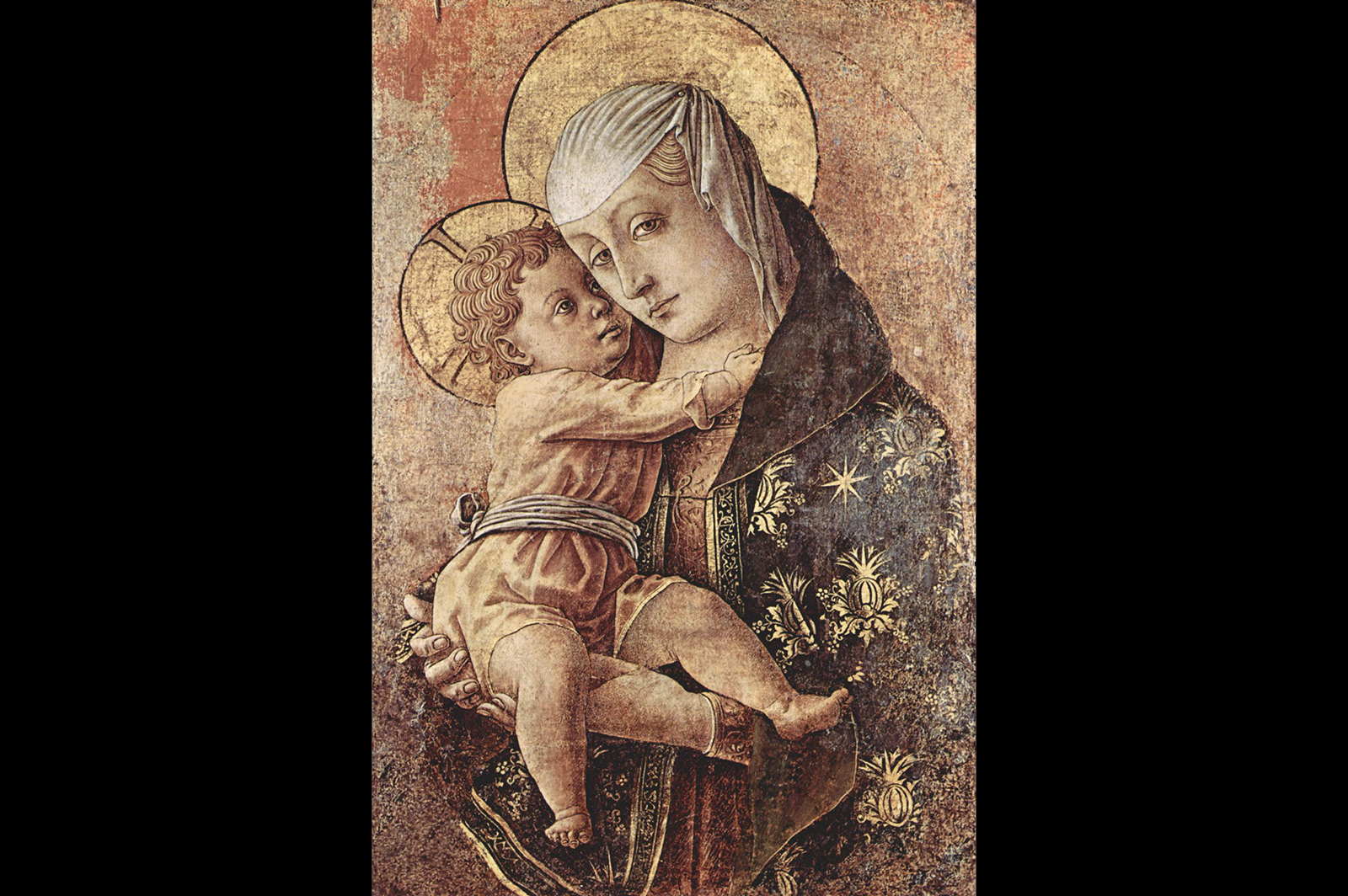
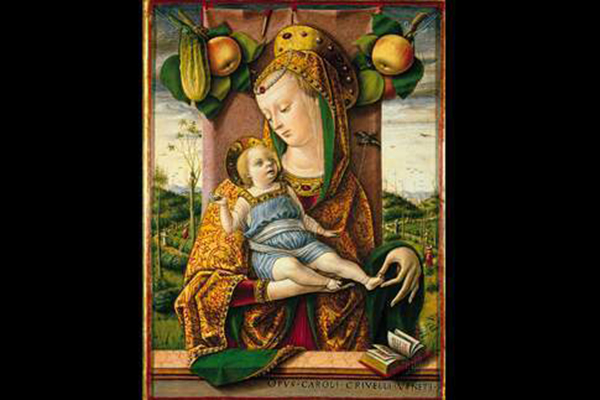
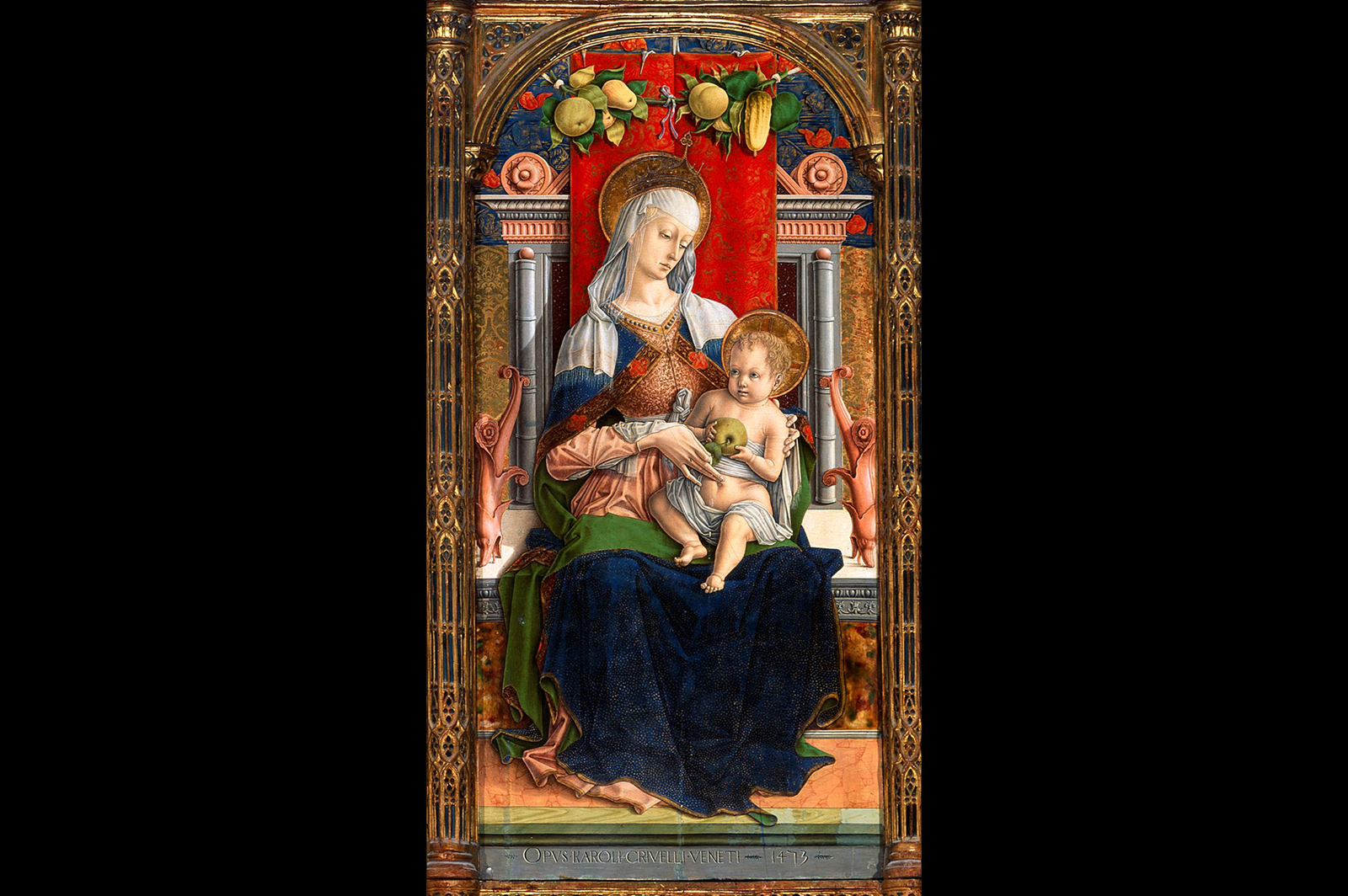
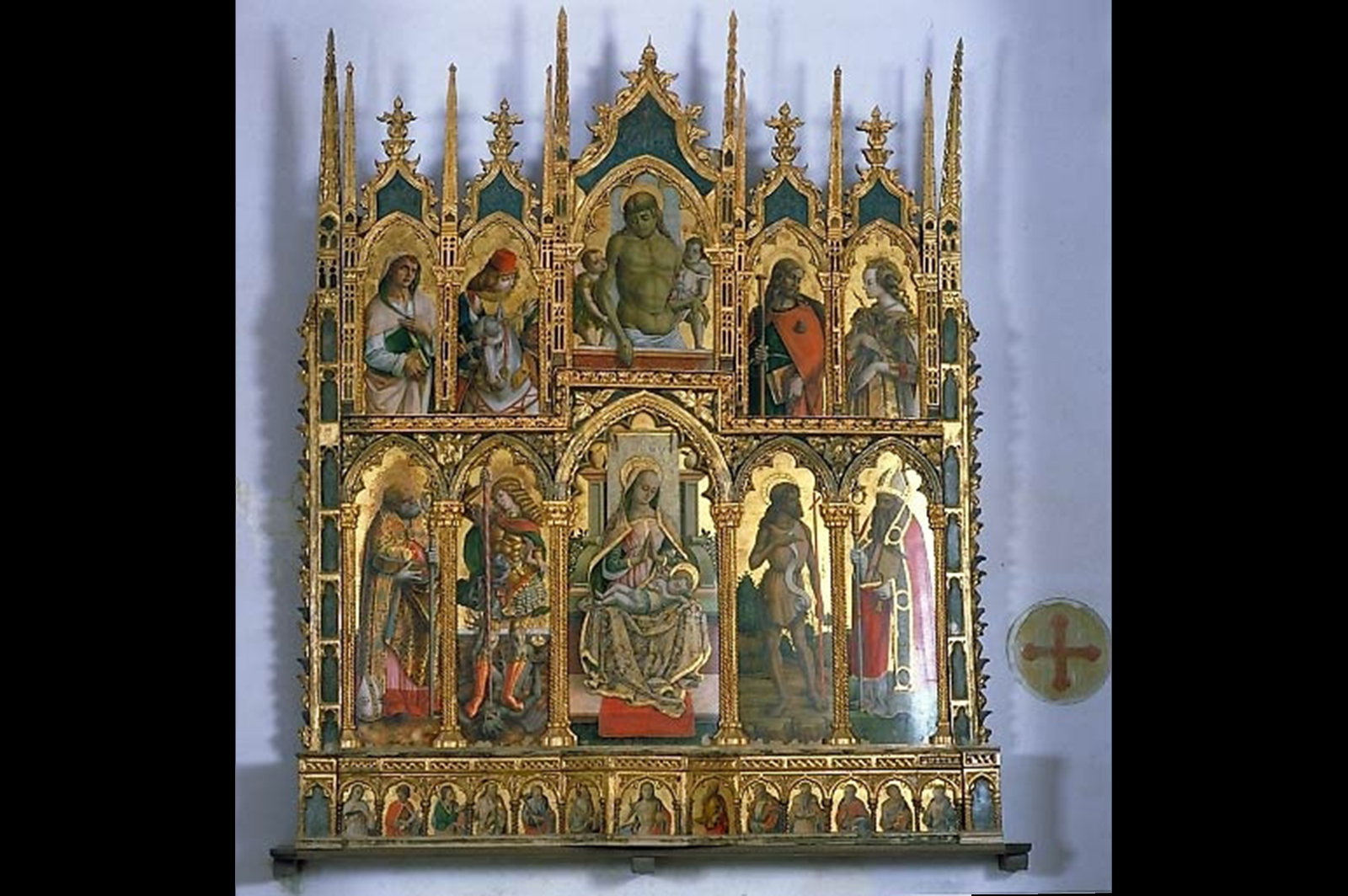
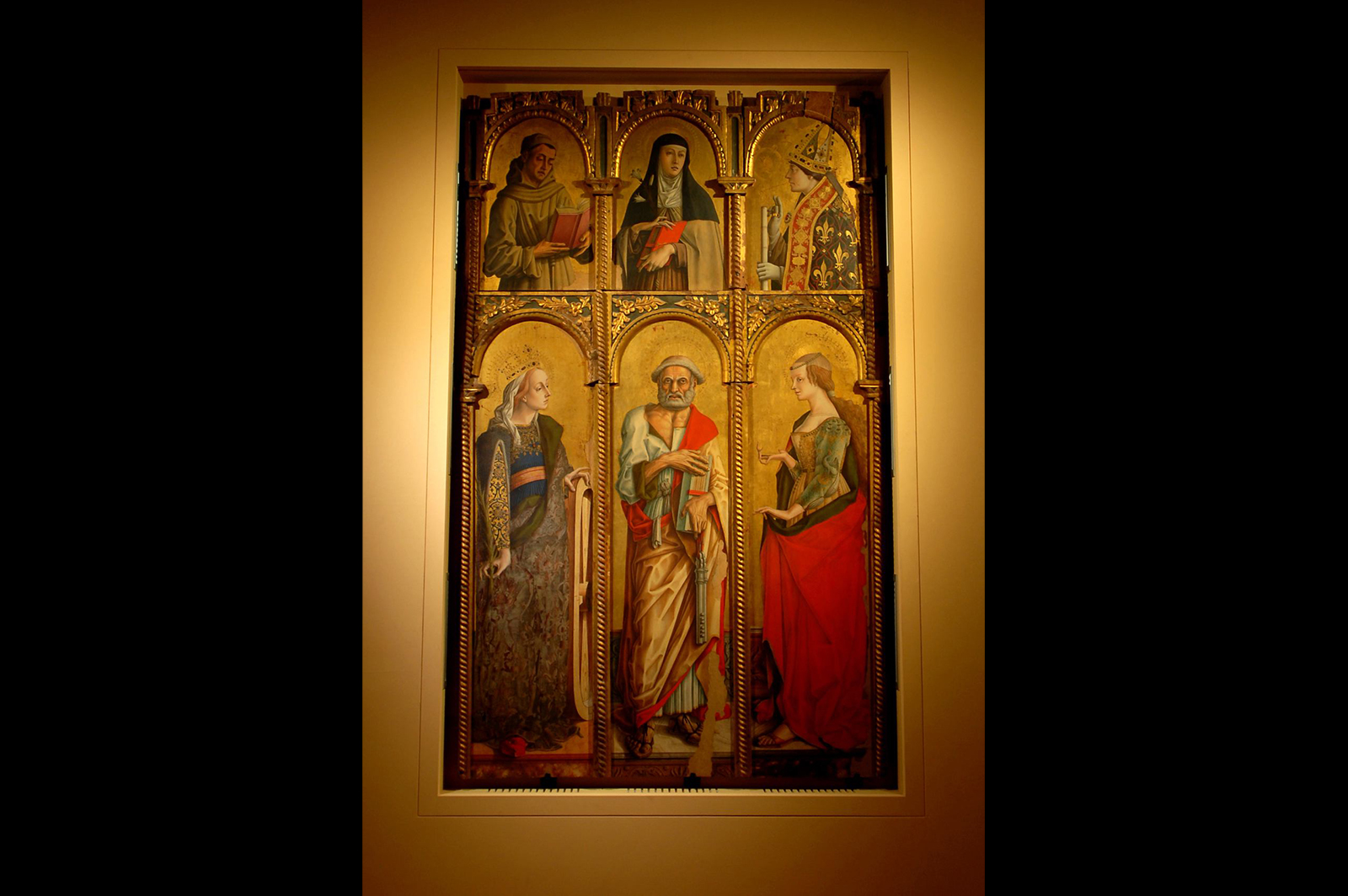
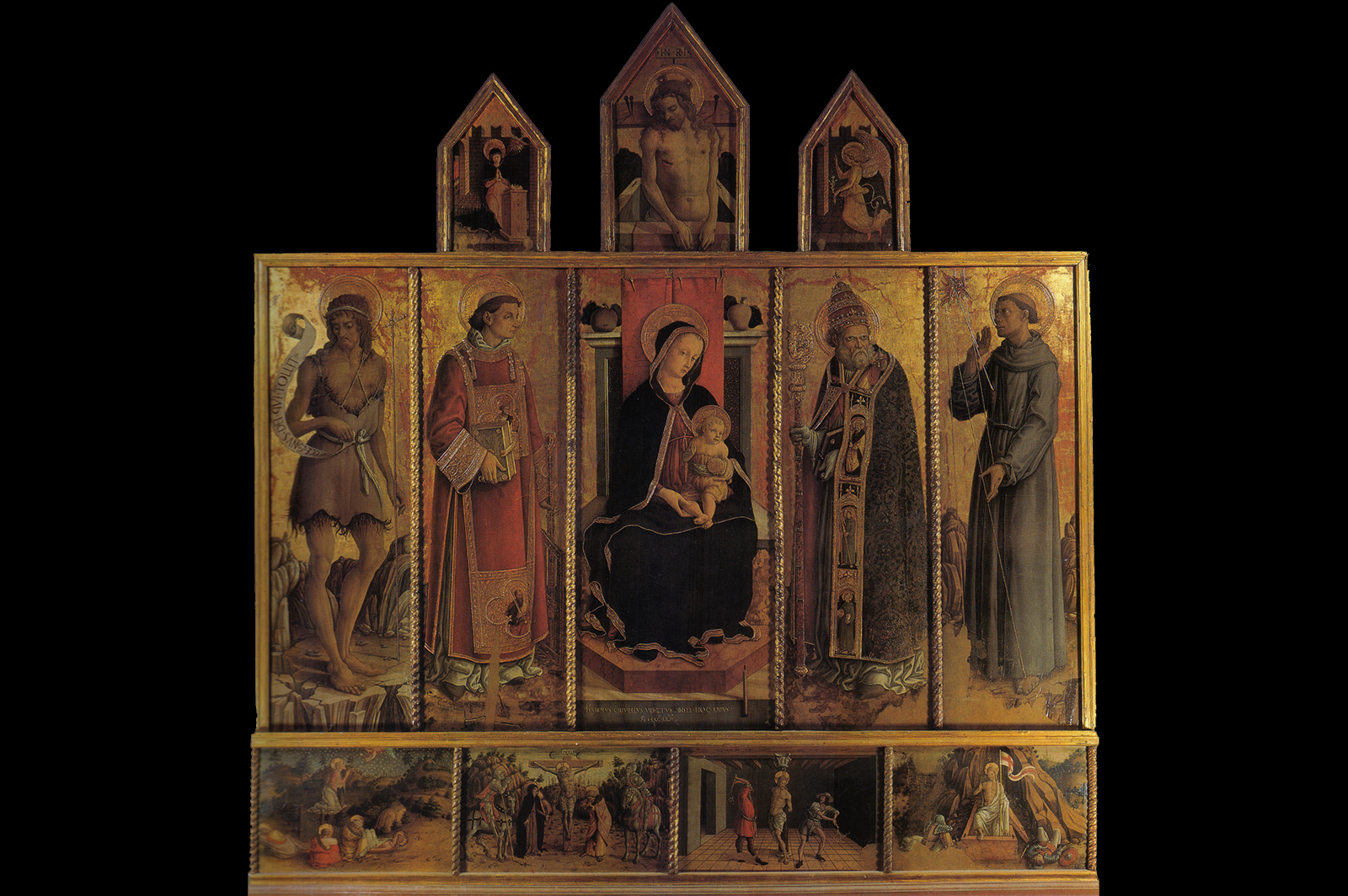

Leave A Comment